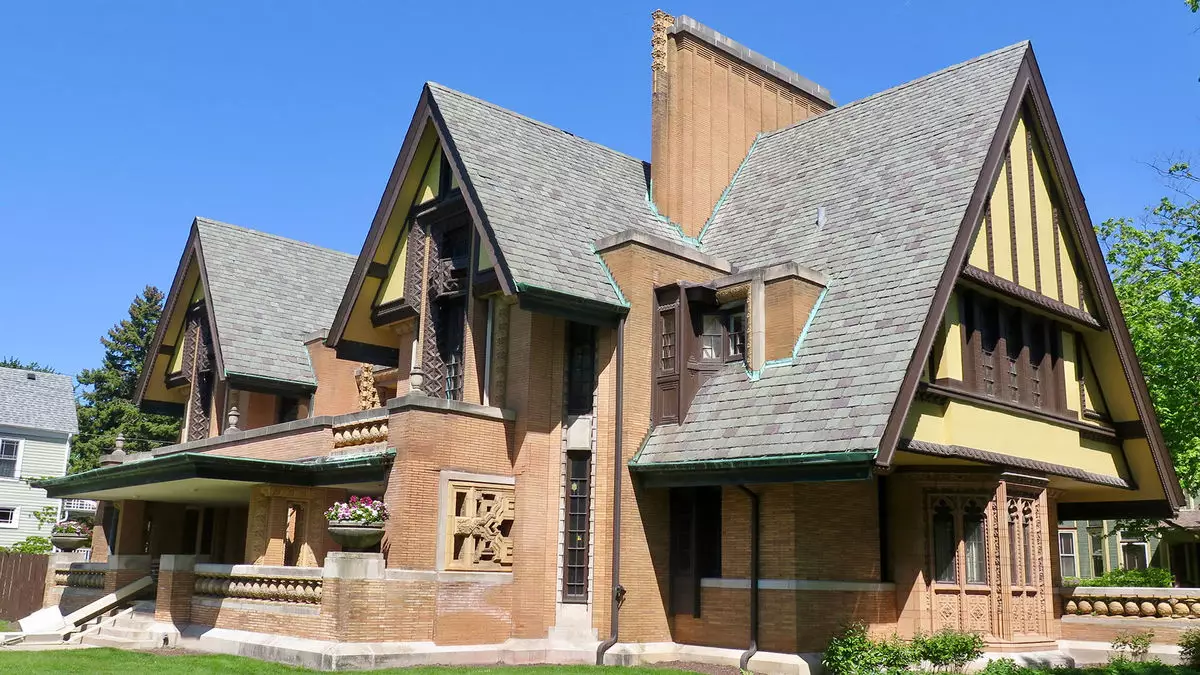Growing up in Illinois, I often found myself visiting the suburban enclaves of Oak Park and Hyde Park. Little did I know that these routine trips would later become gateways to an architectural exploration that would profoundly enhance my understanding of Frank Lloyd Wright’s genius. My recent experience with Victory Cruise Lines transformed my previous perceptions, combining leisure travel with educational enrichment in a way that I had never anticipated.
Victory Cruise Lines recently introduced a premium pre-cruise shore excursion that centers around Wright’s architectural masterpieces. The partnership with the Frank Lloyd Wright Foundation enhances its offerings, melding tourism with education to create a unique travel experience. The curated excursions in cities like Detroit and Grand Rapids are particularly noteworthy, as they provide travelers exclusive access to sites that might be difficult to explore on their own. This collaborative approach positions Victory as a leader in rich, culturally immersed travel experiences, elevating their Great Lakes program to new heights.
Immersive Experience within Architectural Marvels
The shore excursions offered by Victory are pivotal to their Great Lakes program, as explained by Kari Tarnowski, Vice President of Marketing. The unique collaboration with organizations such as the Frank Lloyd Wright Foundation adds complexity and depth, turning a simple tour into an educational journey. Tarnowski makes an astute observation: just as travelers flock to Europe for Unesco World Heritage Sites, so too should they appreciate the remarkable architecture available right here in the United States.
In 2019, UNESCO recognized eight of Wright’s masterpieces, solidifying their importance and heritage. This designation encompasses renowned sites like the Guggenheim Museum in New York and the Fallingwater residence in Pennsylvania. However, what captures the essence of the Victory excursion is its focus on two local treasures: Unity Temple and the Frederick C. Robie House. These structures epitomize Wright’s innovative approach and are crucial in understanding his influence on modern architecture.
In-Depth Discovery of Wright’s Evolution
On my tour through Chicago, I was pleasantly surprised by how engaging and informative the on-site interpreters were. Each guide brought a wealth of knowledge that contextualized Wright’s work, providing a narrative that went beyond dates and statistics. The experience at Wright’s Oak Park home and studio was particularly enriching. Completed in 1889, this site served as both residence and incubator for Wright’s evolving architectural ideas.
The home’s design reflects his intuitive understanding of materials, natural light, and harmonizing with the surrounding landscape—principles that would define his work. Insights into the post-Great Chicago Fire restoration movement, of which Oak Park was a part, enhanced my appreciation for the community’s role in shaping urban and architectural revival. Wright’s use of earthy tones and natural elements made his structures seamlessly blend into their environment, a hallmark that continues to resonate in contemporary architecture.
Experiencing Architectural Masterpieces
Moving on to the Unity Temple was equally compelling. Completed in 1908, it diverged dramatically from conventional church architecture of its time. Wright’s innovative use of concrete, combined with cubist forms, reflects both creativity and practicality—a representation of unyielding vision. Stepping inside, I was struck by how light flowed through clerestory windows and amber-hued leaded glass skylights, transforming the space into a calming sanctuary. The warm colors and unique design elements invite contemplation, making it a profound reflection of Wright’s unified aesthetic principles.
The Robie House in Hyde Park further emphasized Wright’s creativity, standing as a testament to the Prairie School style he pioneered. With 175 windows and doors, the home marries utility with elegance, showcasing his skill in harmonizing structure and surroundings. A particularly stunning aspect is the original electric lighting—dating back to the 1893 Columbian Exposition—which serves as a reminder of the intersection between history and modernity in architectural design.
The Perfect Escape: A Seamless Journey
The meticulously organized excursion lasted eight and a half hours and was priced at $169, which included lunch—a competitive offer for a comprehensive day of exploration. The itinerary was thoughtfully arranged to ensure a smooth transition from the pre-cruise hotel to the ship at Navy Pier. Its popularity highlights an increasing demand for meaningful travel experiences, making it essential for travel advisors to secure bookings well in advance.
In the realm of travel, it’s not just about the destination, but the journey and experiences along the way. Victory Cruise Lines sets a strong precedent by blending architecture, culture, and history into a compelling narrative that invites passengers to engage with their surroundings. Ultimately, these architectural excursions not only enhance appreciation for Wright’s masterpieces, but also weave together the threads of history, innovation, and discovery—all within the familiar landscape of America. This is an experience that remains etched in memory long after the cruise has ended.


Leave a Reply